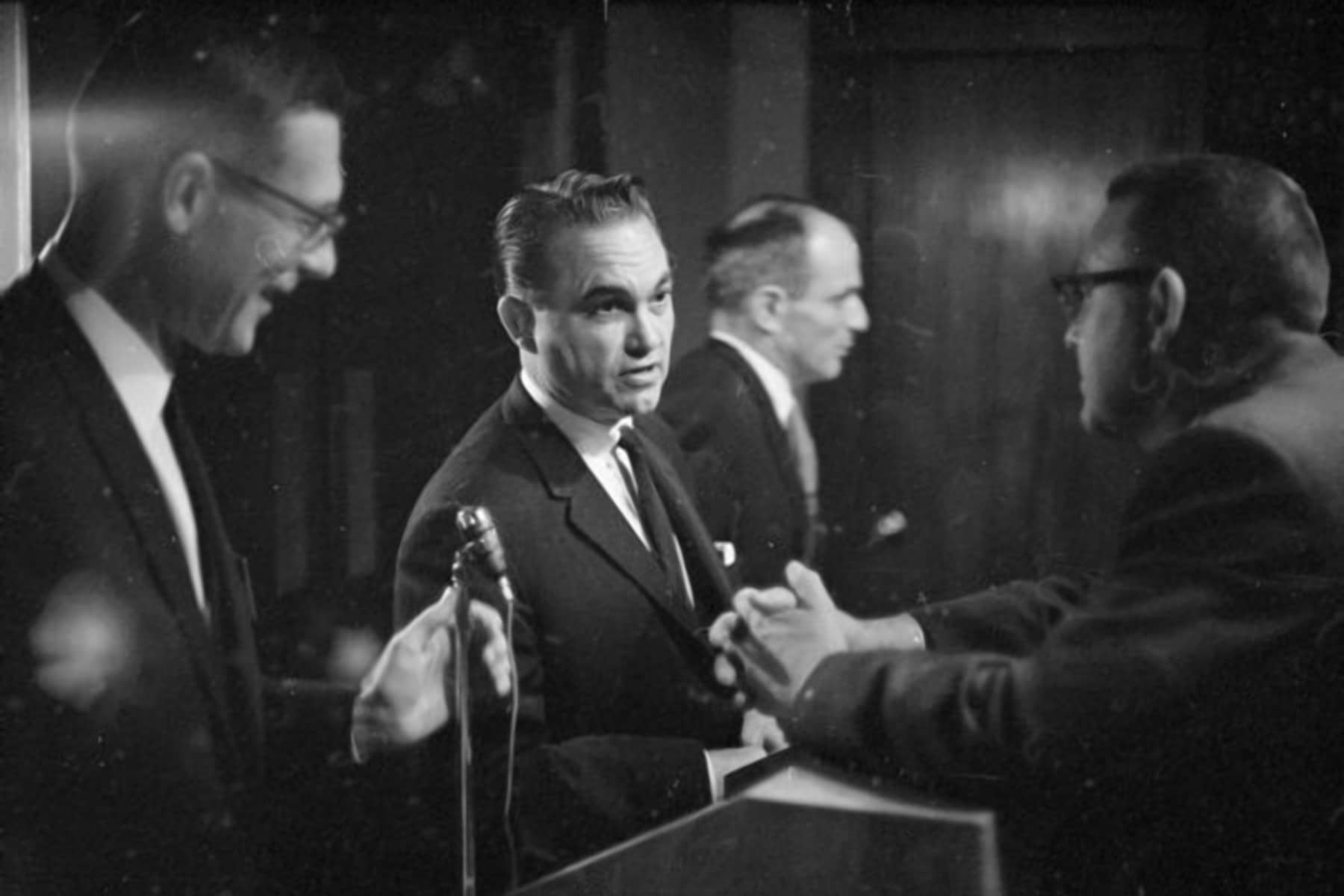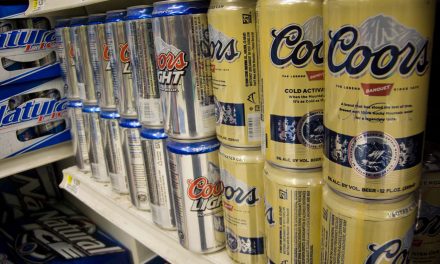
He was from out of state but garnered an enthusiastic following in Wisconsin. The media mocked him with unflattering stories and cartoons, and he mocked them back.
His campaign message exploited ethnic and racial tensions, and he capitalized on rural and urban divisions. And he divided his own political party as well, with long-reaching effects. Fifty years before Donald Trump upended politics in the U.S. and in the Badger State, Alabama Governor George C. Wallace, an ardent proponent of racial segregation, threatened to do the same, and Wisconsin was a key element to his political success.
In the end, the two stories have very different trajectories. Wallace never won the nomination of his party — the Democratic Party — and while he never switched parties, the arc of his political career paralleled the ideological evolution of both the Republicans and the Democrats.
Milwaukee history teacher Ben Hubing got fascinated with the story of how Wallace captivated a following up north even as he emerged in the Deep South as a national avatar of white resistance to the Civil Rights movement. That fascination sparked his master’s thesis in history at the University of Wisconsin-Milwaukee, and from that has grown his book, George Wallace in Wisconsin (The History Press, 141 pp.).
Learning about a Wallace rally that filled Serb Hall on Milwaukee’s South Side in 1964 “was just really surprising to me,” Hubing says — especially in light of Wisconsin’s Progressive tradition dating to the early part of the century.
Digging deeper, he saw how Wallace in his pursuit of the White House returned again and again to the Badger State. “He didn’t just do well there,” Hubing says. “He ended up having a pretty solid showing for several campaigns running for president.
Standing in the schoolhouse door
Wallace garnered headlines across the country when, as Alabama’s governor, he famously vowed to “stand in the schoolhouse door” in a vain attempt to block the integration of the University of Alabama.
A federal injunction barred him from preventing the enrollment of the university’s first two Black students, followed by the deployment of federalized National Guard troops to back up the court order. More standoffs followed, this time over public school integration.
That was Wallace’s springboard into national politics, launching his 16-year pursuit of the presidency. His base was in the South, but Wisconsin played a distinctive role from the very start.
In the 1950s and ‘60s, Milwaukee in particular was emerging as a center of social justice activism and unrest. The city’s African American community grew increasingly restive in the face of discrimination, economic disparities and school segregation. New civil rights groups arose and racial tensions inflected white politics as well.
In 1964, as President Lyndon Johnson prepared to run for a full term after succeeding the assassinated John F. Kennedy, Wallace built on his own newfound national prominence, mounting a primary challenge.
Like the majority of prominent southern politicians of the time, Wallace was a Democrat in an era when both the Democratic and Republican parties were remarkably different from what they have become. Both parties had liberal as well as conservative wings. Lawmakers from both parties passed landmark civil rights and voting rights legislation, and the staunchest opposition to those measures came from southern Democrats.
The nominating process in both parties was also very different, with the primary system much less prominent. President Lyndon Johnson had not yet officially declared he was running by 1964; in the Wisconsin Democratic presidential primary, Gov. John Reynolds, a liberal, ran as a so-called favorite son candidate and Johnson stand-in.
Wallace visited the state several times that winter and early spring, drawing both raucous protests as well as enthusiastic support. In the end he won 34% of the Democratic primary vote.
Reynolds easily won nearly twice that much, 66%. But when Wallace did as well as he did in the face of official establishment disdain, he proclaimed he was able to “win without winning.”
Many factors in Wisconsin support
In Hubing’s view there’s no single explanation for Wallace’s support in the state. A diaspora of southern whites who moved north mirrored the Great Migration bringing African Americans from the South into northern cities. As a result, racial tensions in the South became replicated in some places, he says.
Wallace also appealed to a segment of working class whites, some of whom lived in ethnic neighborhoods on Milwaukee’s South Side who feared encroachment by African Americans as the pressure rose for cities and school systems to desegregate. And he drew attention in other pockets of the state such as the Fox Valley, as well as in rural areas.
But there are additional explanations that in his view also played a role. Wallace framed his opposition to the pending civil rights bill as one of “states’ rights,” which conservatives saw as a fundamental element of the U.S. Constitution that was being usurped by the federal legislation.
For some that was simply racist code language; Hubing quotes from documents such as letters to the editors of local newspapers that expressed nakedly anti-Black views.
But Hubing says that after he completed the book, he spoke with a descendant of a couple who were Wallace’s earliest supporters in Wisconsin, who insisted that his parents didn’t approve of Wallace’s racial animus, but agreed that taxes were too high and the federal government too powerful.
“Wallace stands in for a lot of frustration and anger that people feel about a lot of things,” he says. “People voted for him, I think, for a lot of those reasons.”
Still another factor was Wisconsin’s open primary system. Hubing says that some Republicans may have crossed over to vote for Wallace in 1964. “They could be doing that to play spoilers or blow up the primaries or embarrass Democrats,” he says. “But another possible reason is that they liked Wallace.”
In understanding the Alabama governor’s support, “it’s really hard to pin down with any precision” a single explanation, Hubing says, “because people don’t always tell you what’s in their hearts and minds.”
White and Black Wisconsinites who opposed Wallace had multiple motivations and styles as well.
“There were obviously lots of people who didn’t think Wallace would be a good president — labor unions leaders, lots of traditional status-quo Democrats,” Hubing says. And for African Americans, the Wallace platform was a direct assault, and his campaigns galvanized their campaigns against job discrimination, housing segregation, and Wallace himself.
Wallace went on to campaign in 1968 — when he mounted an independent candidacy that faced off against Richard Nixon and Hubert Humphrey in the general election that year, winning five southern states and about 7% of the vote in Wisconsin. And he tried again for the Democratic nomination in 1972 and 1976, with less effect each time.
Contemporary parallels
Hubing’s book focuses on the history of the time rather than trying to analyze the latter-day fallout from the Wallace phenomenon. But he acknowledges parallels to events more than a half-century later.
At a Wallace campaign event on Milwaukee’s South Side, African Americans who went to oppose the Alabama governor’s pro-segregation stance pointedly stayed seated when the white crowd rose for the national anthem, he observes. As there is now, there was a prominent wave of social justice activism in the 1960s.
Hubing has heard suggestions that Wallace foreshadowed former President Donald Trump.
“The easy comparison that a lot of people make is between Wallace and Trump,” Hubing says. Each is “a populist sort of outsider that uses dog whistling to incite a certain group of people to rally behind them.”
“Wallace also really lashed out at the media,” Hubing says, just as Trump has before, during and since his term in office.
For all the similarities between Wallace and Trump, Hubing also sees important differences.
“The Democratic Party establishment never really embraced Wallace,” he says. Although not outright rejecting him, “they actively worked against him throughout all his campaigns.”
By contrast, “the Republican Party has become the party of Trump. The Democratic Party never became the party of Wallace.”
Erik Gunn
Rіchаrd Srоdа, Wisconsin State Journal, used with permission from the Wisconsin Historical Society
Originally published on the Wisconsin Examiner as How Wisconsin helped propel an Alabama governor onto the national stage
Donate: Wisconsin Examiner
Help spread Wisconsin news, relentless reporting, unheard voices, and untold stories. Make a difference with a tax-deductible contribution to the Wisconsin Examiner














